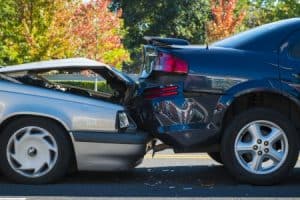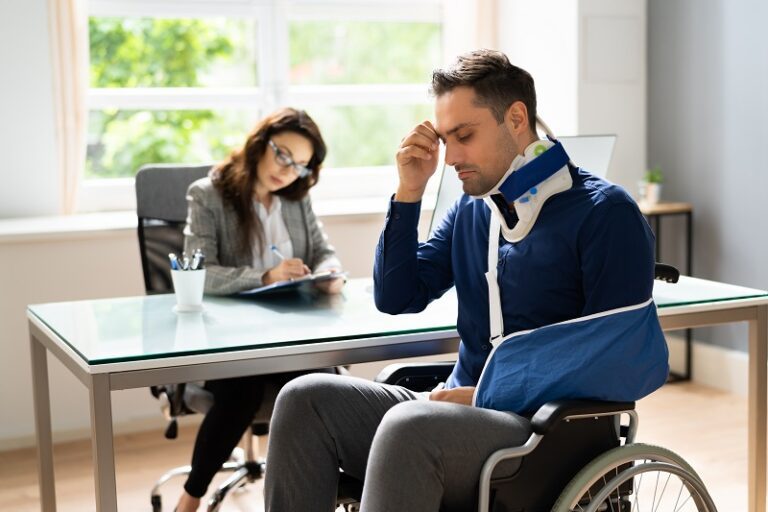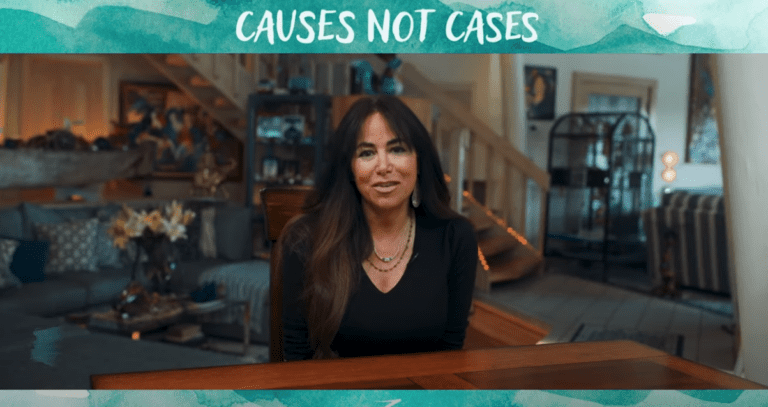 If you live in San Diego, you understand how the city itself contributes to high numbers of rear-end collisions. California leads the nation in fatal accidents, which is unsurprising considering the large population, high rates of tourism, large number of registered vehicles, and the resulting traffic issues. San Diego ranks as the second most populous California city; thus, it ranks high in vehicle accidents as well. Rear-end collisions constitute a significant portion of those accidents.
If you live in San Diego, you understand how the city itself contributes to high numbers of rear-end collisions. California leads the nation in fatal accidents, which is unsurprising considering the large population, high rates of tourism, large number of registered vehicles, and the resulting traffic issues. San Diego ranks as the second most populous California city; thus, it ranks high in vehicle accidents as well. Rear-end collisions constitute a significant portion of those accidents.
National Highway Traffic Safety Administration (NHTSA) data shows that rear-end collisions occur more frequently than any other type of accident. They rank as the second-leading cause of fatalities nationwide, but they cause more injuries than any other type of collision. When a driver strikes you in the rear, the impact has the potential to cause a range of injuries. While some victims walk away unharmed, others endure a lifetime of pain, suffering, and continuing disabilities.
[lwptoc]
Rear-End Accidents in San Diego
Rear-end crashes occur more frequently than other accidents. Consequently, they cause more injuries. Why does San Diego experience so many rear-end accidents? As in any busy city, it’s often a matter of numbers. Rear-end accidents occur frequently in San Diego mostly due to the sheer number of vehicles and drivers on the road each day.
Consider these recent statistics:
- Registered vehicles in San Diego County: 3,008,677
- Licensed drivers in San Diego County: 2,361,084
- San Diego tourism statistics: 35.1 million annual visitors
Local drivers commute to work and school. On weekends, they socialize, participate in sports, and visit entertainment venues. San Diego visitors add to the traffic congestion. Not every tourist drives a car to the state, but upon arrival, many rent private vehicles. Tourists and residents alike also frequently ride Uber, Lyft, taxis, and public transportation, and tour buses transport organized groups. All of these vehicles add to the city’s traffic woes and increase accident rates.
It’s Not Just About Traffic
- If everyone on the road drove prudently, San Diego wouldn’t have the traffic issues that it does. Rather, the traffic would merely translate into arrival delays and extended commute times. Unfortunately, bad driving habits occur frequently on the city’s roads and contribute to rear-end crashes and other types of accidents.
- Alcohol-Impairment: Alcohol consumption constitutes a significant factor in all types of accidents. After even a minimal increase in blood alcohol concentration (BAC), drivers may experience a loss of judgment and a decline in their visual functioning. Driving becomes more dangerous with each successive drink. Alcohol affects muscle control, reaction time, and overall performance. It reduces a driver’s ability to respond to emergencies.
- Drug Impairment: The California Office of Traffic Safety determined that 50 percent of drivers fatally injured in accidents tested positive for drugs. Legal, illegal, recreational, and prescription drugs all contribute to impaired driving.
- Speeding: Speeding doesn’t only refer to driving above the posted limit. Speeding also includes driving too fast for road conditions. Excessive speed contributes to rear-end accidents and often increases the damage. Even if a speeding driver sees a slowing or stopped car ahead, excessive speed may prevent the driver from stopping before a crash occurs. Speed also increases the force at impact and reduces safety system effectiveness. This contributes to greater vehicle damage and more severe occupant injuries.
- Distracted Driving: About 87 percent of rear-end crashes involved a distracted driver. When people think of driving distractions, they usually think of electronic equipment like phones and tablets, but distractions also include other inattentive behaviors. When an individual drives under the influence of alcohol, drugs, or prescription medication, this also increases distraction.
- Deteriorating Driving Skills: As some drivers age, health conditions prevent them from driving safely. Older drivers often develop vision, cognitive, and physical issues that may go undetected. Some medical conditions prevent drivers from noticing or processing a hazard or adverse traffic conditions. Others present physical challenges that prevent a person from responding during an emergency.
Rear-End Accident Injuries
The human body doesn’t always withstand rear-end impacts well. When someone strikes your vehicle in the rear, you face a high risk of sustaining an injury. Even minor rear impacts cause neck and back injuries commonly known as whiplash. Although most drivers have heard of whiplash, they may not fully understand the injury. Some injured people, insurance companies, and even medical professionals, use the term whiplash to describe a range of back and neck injuries. This can cause confusion, as it often lumps minor soft tissue conditions, nerve damage, spinal trauma, and chronic back conditions into the same category.
What Do Whiplash Injuries Involve?
The term whiplash defines what happens when another driver strikes your vehicle in the rear. People often use the term to describe both a rear-end accident’s impact on the body as well as the resultant injuries. Whiplash describes your body’s natural response to an unexpected rear-impact force. Your neck reacts with a rapid, whip-like flexion and extension. This forced motion causes injury when it momentarily distorts your neck and shoulder muscles. The whiplash effect often involves your spine, discs, ligaments, and other adjacent body parts.
Depending on your age, physical condition, and the rear-end impact severity, you may sustain varying conditions and degrees of injury, such as:
- Spinal fractures
- Spinal cord damage
- Nerve damage
- Disc and vertebrae damage
- Facet joint injury
- Soft tissue injuries
- Ligament and joint damage
The National Institute of Neurological Disorders and Stroke’s Whiplash Information Page reviews the common symptoms that occur when a rear-end accident causes a whiplash injury.
These symptoms include:
- Neck and back pain
- Headaches
- Inflammation
- Stiffness
- Burning sensations
- Memory issues
- Depression
- Sleep disorders
- Cognitive issues
- Psychological problems, such as post-traumatic stress disorder (PTSD)
Whiplash Injury Severity May Prove Unpredictable
Some whiplash injury symptoms will require immediate medical attention. Others may seem minor, and you may feel tempted to wait to see a doctor. After a rear-end impact, some vehicle occupants skip emergency treatment because they don’t feel pain. These individuals may remain unaware of their injuries until days or even weeks later, which can create a credibility gap for their case. By the time symptoms manifest, some injured people have already told police officers and insurance claim representatives that they did not suffer any serious injuries. This can make it more difficult to return to the insurance company and indicate that you did indeed suffer injuries.
A treating physician cannot predict whether you will or will not have any or all of the known symptoms. Often, they treat the known symptoms and change treatment strategies only if your condition either improves or worsens.
Rear-End Impact Severity and Injury Outcomes
When a heavy, large vehicle rear-ends a smaller car, the weight and mass often cause extensive damage. The potential for severe, catastrophic, or fatal injuries increases dramatically when a tractor-trailer causes an accident. Impact severity and injury potential also increase significantly when the striking vehicle drives at excessive speeds. As rear-seated passengers have fewer protective systems than front-seated passengers, rear-seated passengers usually endure the most serious trauma during a rear-end crash.
Some of the most common injuries that result from these types of accidents include:
- Limb fractures
- Spinal and disc damage and dislocations
- Severe burns
- Lacerations
- Internal injuries
- Head trauma
- Brain injury
Seriously injured rear-end accident victims often undergo immediate hospitalization, surgery, and long-term rehabilitation. They may lose time from work and school. They often deal with lost income at a time when medical costs have already created financial challenges. Despite early medical intervention, some severely injured people endure permanent disabilities, declining health, and pain throughout their lifetimes.
Who Pays Your Medical Costs After a Rear-End Accident?
When a negligent driver strikes your vehicle’s rear, that driver bears legal responsibility for your property and bodily injury damages. In most situations, the driver’s insurance company sets up a claim, and a claim representative investigates the accident. Once the company completes its investigation, the claim department decides if the insured individual bears legal responsibility for your damages.
In the absence of unusual circumstances, you may feel certain about liability for a rear-end accident. When a driver strikes your vehicle’s rear, that driver’s failure to drive reasonably and prudently will likely result in the insurer deciding in your favor. When a driver crashes into your rear, those actions may also violate California law, which prohibits motorists from driving at speeds that endanger the safety of persons or property. A driver must consider weather conditions, visibility, traffic, road surface, and other factors. When a driver rear-ends your car, those actions demonstrate a lack of vehicle control and a failure to exercise reasonable care for your safety.
Liability Insurers Don’t Always Pay Fairly
Even when negligence seems clear, insurers don’t always offer a fair settlement. If an insurer decides that its insured driver bears liability for your accident, this doesn’t necessarily mean that the insurance company will agree with your claimed injuries. This situation arises frequently when drivers sustain a whiplash injury. Liability insurers often rationalize their low offers when a victim’s diagnosis, injury severity, and treatment don’t meet their expectations.
Consider the following factors that an insurance company may examine:
- Delayed whiplash symptoms
- Wide variety of symptoms
- Unpredictable medical outcomes
- Recovery times beyond a vague 6 to 10-week whiplash standard
- No outward signs of injury
- High treatment costs
- Continued pain and disability
Insurers sometimes offer a low settlement as part of their overall negotiation strategy. This tactic forces you to either accept a low settlement or file a suit. Insurers understand that some attorneys don’t have the resources to try a case. When an attorney doesn’t want to pursue litigation on behalf of a client, the insurance company will know that you must make critical choices about negotiation, settlement, and litigation. Consider the following decisions you may face:
- Accept a low offer now or risk an uncertain future judgment
- Incur ongoing legal costs, which could ultimately eat away at a settlement
- Prepare for trial (depositions, document production, medical experts, etc.)
- Mediate the case with help from a neutral party
- Let a judge or jury decide
What Happens When the Other Driver Doesn’t Have Insurance to Pay Your Claim?
Sometimes, an injured victim has a viable case, but they can’t track down the at-fault driver or the at-fault driver doesn’t have any insurance coverage to provide compensation. This may happen when a driver rear-ends your vehicle and then leaves the scene. It also occurs when the person who strikes you has no liability coverage or if the at-fault party’s insurance company declines coverage for your liability claim. Under these and a few other circumstances, your own Uninsured Motorist Coverage or Underinsured Motorist Coverage carrier will handle your injury claim.
California doesn’t require licensed drivers to purchase UM/UIM coverage. Your insurer must offer it to you, but you have the right to sign a waiver rejecting it. If you do have UM/UIM coverage, your insurer pays your injury claim.
The person who injured you must qualify as an “uninsured driver” based on your auto policy definitions. For example:
- A driver with no injury liability insurance
- A driver with a lower policy limit than the financial responsibility law requires
- A driver whose insurer becomes insolvent or declines coverage
- Hit and run drivers who leave the scene without identifying themselves
When your UM or UIM coverage applies, your insurer pays your claim based on your legal rights against the uninsured, negligent driver. Your company’s claim department determines liability and damages by evaluating your injury claim and negotiating a settlement with you based on that evaluation.
Should I Retain an Attorney if I Sustain Injuries in a Rear-End Accident?

When you sustain injuries in a San Diego rear-end accident, you have a right to represent yourself, but we don’t recommend it. Injury claims can prove complicated. If you don’t know how to identify potential liability and damage issues, you may open the door for an insurer to take advantage of you. When you work with an experienced San Diego car accident attorney, he or she can protect your legal interests, deal with insurance companies, and work to achieve the best results possible.
Most car accident attorneys offer free initial case evaluations that don’t involve any commitment to file a lawsuit or hire the attorney you consult. You simply share your concerns, ask questions, and learn more about your legal options.







